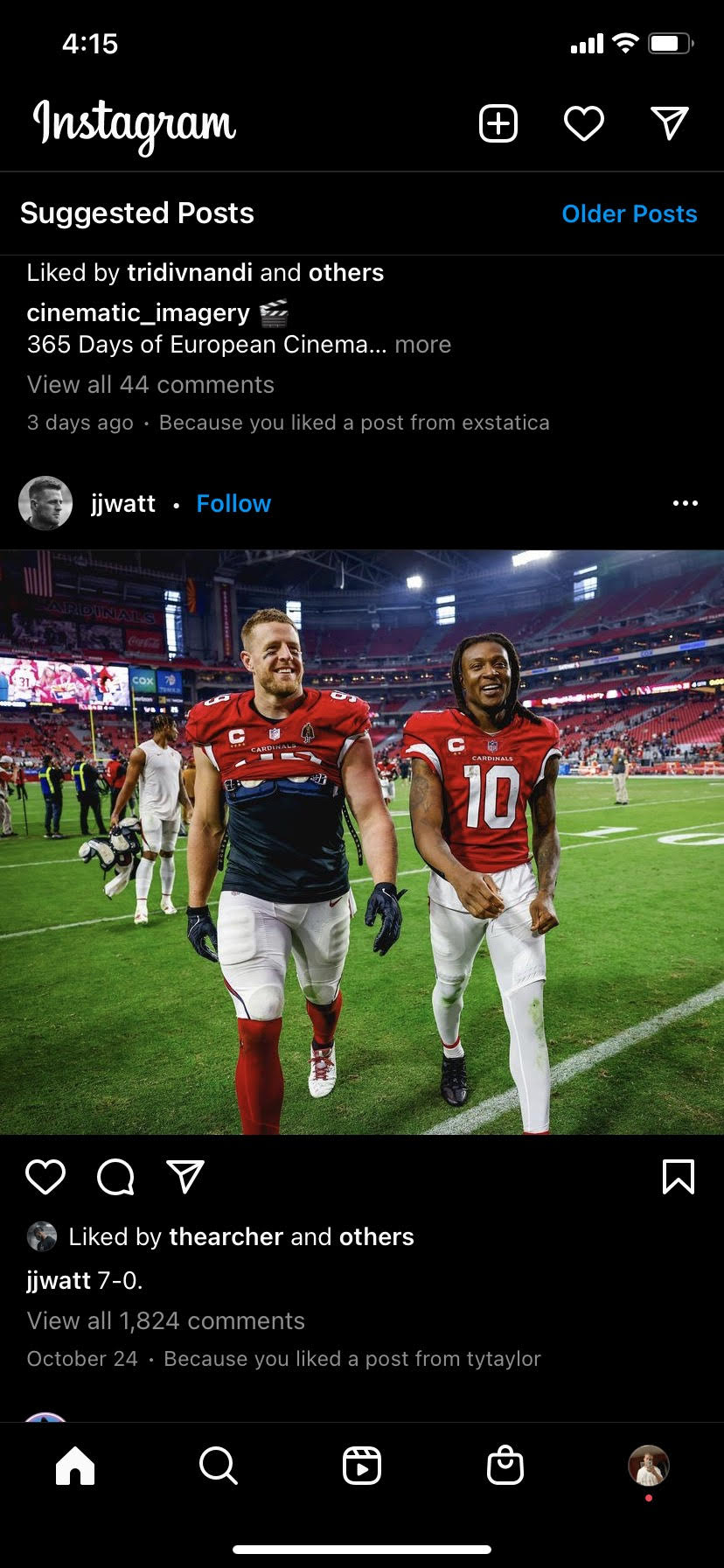Image Attribution: “Joshua Seaman – Visa 1500 – Assignment 3, Part A” by Joshua Seaman is licensed under CC BY-NC. (See interactive map)
Joshua Seaman (T00644678)
Assignment 3, Part A
November 1, 2021
VISA 1500 – Introduction to Visual Culture
This picture is a screenshot I took while scrolling through the “Suggested Posts” on my Instagram feed. After tracking my social networking sites usage over the course of five days, I found that the two sites I used the most were Instagram and TikTok. On average, I spent around 30 minutes on TikTok and around 10 minutes on Instagram each day, which amounts to around 40 minutes of my time spent on these social network sites every day. During these five days of me tracking my usage, I did not create or alter any media. All the time I spent using these sites was for consuming media and also sharing some posts that I found entertaining with some friends of mine.
Both Instagram and TikTok are quite similar platforms in the way that they display media to their users. TikTok has a “For You” page that an algorithm curates to display posts that are similar to previous posts that the user has interacted with, much like how Instagram operates their “Suggested Posts” page. The key difference between these two sites is that Instagram, while it also has many videos posted to it, is primarily used as a platform to create and consume photos while TikTok’s primary use is for creating and consuming videos.
As is with most social networking sites, the usage of Instagram and TikTok comes with various positive and negative aspects. Seeing as both of these platforms are very similar, the pros and cons that come with using them are quite similar as well. On the positive side, these sites can be used to build a name for yourself or your company, and establish a brand through promotion on these platforms. These sites can also be used to share entertainment to both large and small-scale groups of people, allowing for individuals to connect online and have a sense of community. However, on the negative side, these sites can cause individuals to alter and falsify every aspect of the content that they post in attempts to portray themselves as flawless, out of fear of being judged by others for not being perfect.
As social networking sites continue to grow, it is becoming increasingly difficult to live your life without the use of the Internet, especially during times where isolation is a necessity. Daria J. Kuss and Mark D. Griffiths state “A younger generation of scholars has grown up in a world that has been reliant on technology as an integral part of their lives, making it impossible to imagine life without being connected” (p.5, 2017). During the course of the COVID-19 pandemic, it has been extremely difficult for people to connect with their close friends and family in-person. Therefore, social networking sites have been needed in order to emulate a sense of connectivity among people. Adrian Wong et al. state “Transparency is crucial when information is received from users who may be completely unknown to us- personal opinions, inherent biases, and erroneous information can be difficult to identify when we are constantly bombarded with by a huge volume of evolving content” (p.3, 2020). It is very important to be critical of what you see online, as there are many people who falsify the content that they choose to post on social networking sites.
Works Cited
Kuss, Daria J. and Griffiths, Mark D. “Social Networking Sites and Addiction: Ten Lessons Learned.” International Journal of Environmental Research and Public Health, 17 Mar. 2017, https://www.mdpi.com/1660-4601/14/3/311/htm.
Wong, Adrien et al. “The use of social media and online communications in times of pandemic COVID-19.” Journal of Intensive Care Society, 22 Oct. 2020, https://journals.sagepub.com/doi/full/10.1177/1751143720966280.
